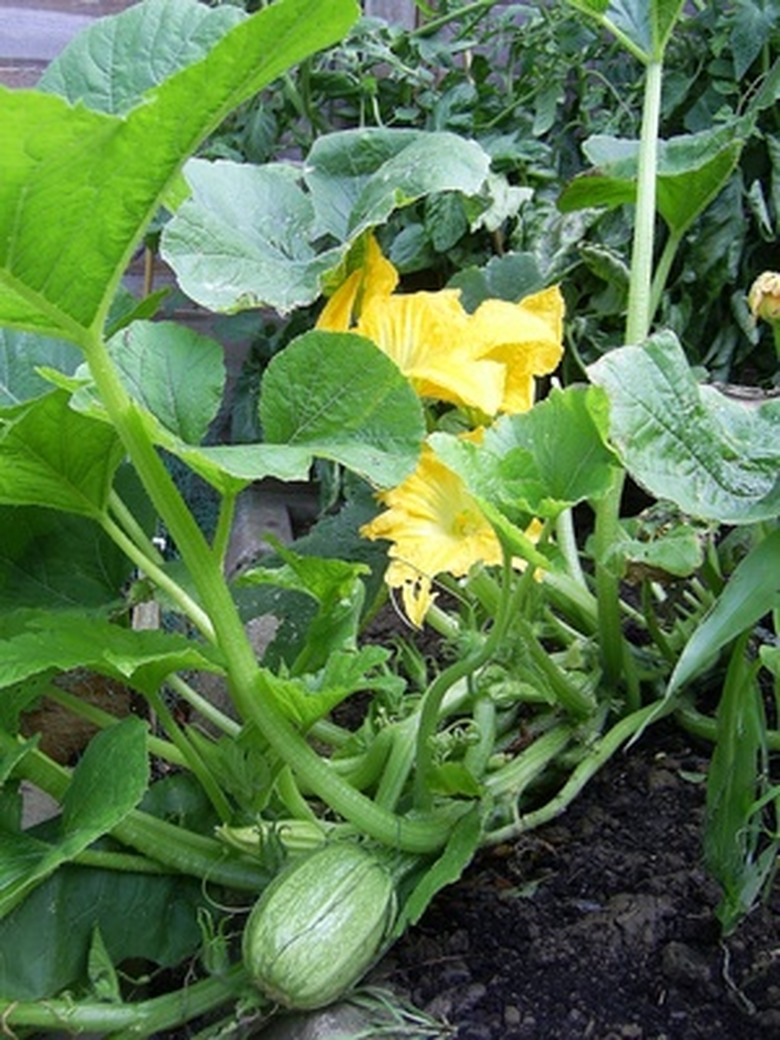How To Water Squash Plants
Although summer and winter squash have different growing habits and harvesting times, they have one important growing need in common. Both summer and winter squash plants require careful and plentiful watering to ensure a healthy squash harvest. Because squash vines grow both deep and shallow root systems, they can access moisture from the soil when other plant varieties cannot. However, squash plants will produce more squash when a gardener irrigates them regularly.
Step 1
Assess the soil every two days to ensure it is not drying out. If you notice the soil drying 1 inch below the soil surface, prepare to water the squash plants.
Step 2
Position the garden hose so it applies water at the soil level and not over the plant foliage. If you use a watering can to irrigate, sprinkle the soil and not the plants.
- Although summer and winter squash have different growing habits and harvesting times, they have one important growing need in common.
- Because squash vines grow both deep and shallow root systems, they can access moisture from the soil when other plant varieties cannot.
Step 3
Apply water slowly and continuously to saturate the soil fully. Do not water shallowly; instead, give the squash plants a slow watering that saturates the soil.
Step 4
Provide 1 inch of water for squash plants each week if rainfall is not adequate during any one-week period.
Water Squash?
Squash thrive with deep watering, where moisture penetrates about 4 feet into the ground. Deep watering encourages the squash to form a deep, healthy root system. Watering frequency depends on temperatures, recent rainfall and how well your soil drains. During rainy weather, you may be able to extend the period to 10 to 14 days. A thick layer of mulch helps conserve the soil moisture by preventing evaporation. Apply an organic mulch, like straw, after planting. You can also use plastic mulch. Although squash thrive with deep watering, the leaves suffer if they stay wet for too long. Water the plants near the base so you keep the leaves dry. Watering early in the day ensures foliage dries quickly. Also, avoid over-watering. Squash roots also need both oxygen. Waterlogged soil means the roots can't get any oxygen, causing the squash to drown and develop root rot.
- Apply water slowly and continuously to saturate the soil fully.
- Although squash thrive with deep watering, the leaves suffer if they stay wet for too long.
Tip
Pay close attention to watering needs for squash plants during the flowering and fruiting stages. If squash plants do not receive at least 1 inch of water during these periods, squash production will suffer. The frequency at which you must water squash plants depends upon your soil composition. If you have sandy soil, you may need to water more often. If you have heavy soil, you may need to water less often.
